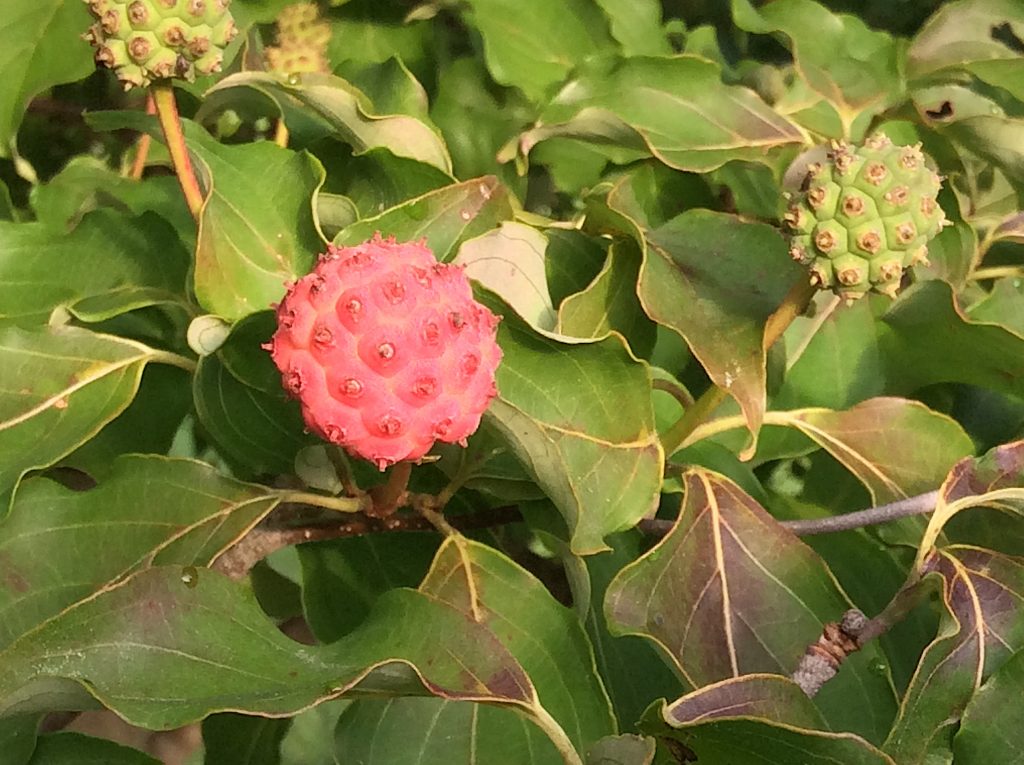
Ripe and unripe Kousa Dogwood fruit. Photo by Green Deane
In the backwoods of Maine where I grew up Dogwoods were small. Perhaps the weather and the species conspired to make them inconspicuous. They did not prepare me for more flamboyant Dogwoods including Kousa. A popular ornamental and escapee, Kousa Dogwood does have edible fruit. Whether you will like it or not is a different debate. I was recently in North Carolina at an agricultural center studying mushrooms. As one might expect the landscaping around the main center was quite coiffured. But next to a lower parking lot where the forest met the pavement was a Kousa Dogwood happily invading the harrow agricultural ground. They were not originally planted for their fruit but rather attractive blossoms. By the way, one of the ways to identify a Dogwood is to carefully tear a leaf apart across the veins. A latex in them will form threads and hold the two separated parts of the leaf together on white webs. To read more about the Kousa Dogwood go here.
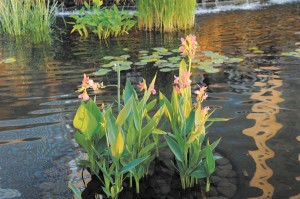
Canna can grow in a garden or a pond.
When it comes to plants you can see something for a long time but not see it. That was my experience with Canna. In the late 80’s a friend of mine had Canna planted along her house. As she was from Taiwan I presumed — like most of the plants around her home — they were native to Asia. As it turned out I was just one in a very long line of people thinking this native of the Americas was actually Asian. I didn’t make the connection to local Canna because the two species have different blossoms, one skinny and red, the other fat and yellow. But then one day while fishing along the St. Johns River east of Sanford I saw a large stand of “native” Canna and investigated. There are several edible parts to the Canna including the roots. The hard seeds, however, have been used as a substitute for buckshot… they are that hard. You can read more about this peripatetic beauty here.
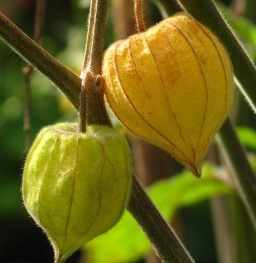
As the Ground Cherry ripens the husk turns golden.
From a foraging point of view it was a very berry weekend starting with Coastal Ground Cherries, Physalis angustifolia in Port Charlotte. Our timing was good, their husks were gold to a tan, dry and papery. Inside the fruit was deep yellow to gold, tangy in taste. Ground cherries ripen from green to gold, getting sweeter and tangier as they go along. But they can often have a bitter aftertaste either from being under ripe or some species just retain some bitterness. A little aftertaste of bitterness is okay but the best is when there is none. Thus one always tastes a ripe ground cherry then you wait a minute or so for any bitterness to appear.
While locally Ground Cherries can fruit nearly all year, they do produce a spring and fall crop. In cooler climes — most of North America — they just have one season ripening in late summer and fall. Here our fall crop tends to be better than our spring one. Spring ground cherries can rot on the plant or get damaged by insects and that is also when I tend to find more bitter ones. But this time of year brings out the best in ground cherries. One can find whole, undamaged, very ripe Ground Cherries in significant numbers. You can make a pie out of them if you can manage to get some home uneaten. Incidentally there is a second local ground cherry that resembles the Coastal Ground Cherry. It’s Physalis walteri, also known as Starry-Hair Ground Cherry and Sand Cherry. It has star-shaped hairs on the lower edges of the leaf which are visible with a hand lens. Still has edible berries, however as does P. angulata, and other common Ground Cherry. To read more about Ground Cherries go here.
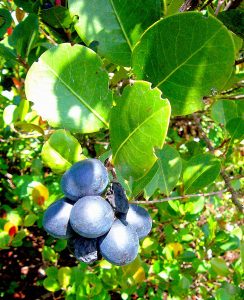
Coco plums come in three colors but one flavor. Photo by Green Deane
The second “berry” of the day was Cocoplums. As we are in a seasonal shift we had to look at several bushes but we found more than enough for everyone to have a good taste of the much-underrated fruit. I’m not sure why most wild food writers disparage the Cocoplum. I like the pulp’s flavor as well as the seed which tastes like granola to me, or almonds. There are three common varieties, purple, red and white. All are edible and to my palate taste the same. Those who study the various species say the flavor improves with the dark species. As they have a long season and are a common ornamental one can usually collect a lot of Cocoplums. To read more about this native ornamental shrub click here.

Classes are held rain or shine or cold. Hurricanes are an exception.
Foraging Classes: With cooler weather foraging is even more fun. This weekend there is a class in northern Central Florida — Cassadaga (has some mushrooms) and on the west coast in Largo, always a pleasant forage.
Saturday, September 15th, Colby-Alderman Park: 1099 Massachusetts Street, Cassadaga. Fla. 32706. 9 a.m. to noon.
Sunday, September 16th, Eagle Park Lake, 1800 Keene Road, Largo, FL33771. 9 a.m. to noon Meet at the pavilion near the dog park.
Saturday, September 22, Spruce Creek Park, 6250 Ridgewood Ave. Port Orange, 32127. 9 a.m. to noon.
Sunday, September 23rd, Dreher Park, 1200 Southern Blvd., West Palm Beach, 33405. 9 a.m. to noon. Meet just north of the science center.
Saturday, September 29th, Boulware Springs Park, 3420 SE 15th St., Gainesville, FL 32641. 9 a.m. to noon. Meet at pavilion near pump house.
Sunday, September 30th, Blanchard Park, 10501 Jay Blanchard Trail, Orlando, Fl. 32817. 9 a.m. to noon. Meet at pavilion by the tennis courts by the YMCA building.
For more information about the classes or to pay for them go here.

Green Deane DVD set of 135 videos
All of Green Deane’s videos are available for free on You Tube. They do have ads on them so every time you watch a Green Deane video I get a quarter of one cent. Four views, one cent. Not exactly a large money-maker but it helps pays for this newsletter. If you want to see the videos without ads and some in slightly better quality you can order the DVD set. It is nine DVDs with 15 videos on each for a total of 135 videos. Many people want their own copy of the videos or they have a slow service and its easier to order then to watch them on-line. The DVDs make a good gift for that forager you know especially on long, cold winter months. Individual DVDs can also be ordered or you can pick and choose. You can order them by clicking on the button on the top right hand side of this page (if your window is open wide enough.) Or you can go here.
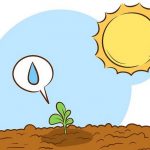 Donations to upgrade EatTheWeeds.com and fund a book have gone well and made it past the half way mark. Thank you to all who have contributed to either via the Go Fund Me link, the PayPal donation link or by writing to Green Deane POB 941793 Maitland FL, 32794. The goal now is to expand the forum page and the means to display more foraging teachers. And a special thanks to Thomas Sorrentino for your recent donations.
Donations to upgrade EatTheWeeds.com and fund a book have gone well and made it past the half way mark. Thank you to all who have contributed to either via the Go Fund Me link, the PayPal donation link or by writing to Green Deane POB 941793 Maitland FL, 32794. The goal now is to expand the forum page and the means to display more foraging teachers. And a special thanks to Thomas Sorrentino for your recent donations.

Green Deane Forum
Want to identify a plant? Need to identify a plant? Looking for a foraging reference? Maybe you have a UFO, an Unidentified Flowering Object, you want identified. On the Green Deane Forum we — including Green Deane — chat about foraging all year. And it’s not just about warm-weather plants or just North American flora. Many nations share common weeds so there’s a lot to talk about. There’s also more than weeds. The reference section has information for foraging around the world. There are articles on food preservation, and forgotten skills from making bows to fermenting food. Recent topics include: I Finally Found Wapato, Looks like Corn, Weed With Pod At Top, A Mile Walk In The Woods, Chicken of the Woods?, Elderberry Fungus, Spurge Nettle 2018, Does Anybody Know This Berry, and Five-Minute “English” Muffin with Beautyberries. You can join the forum by clicking on the button in the menu line.
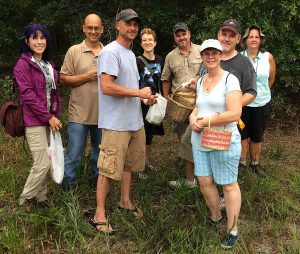
OMGers looks quite fresh after a couple of hours of mushroom hunting. Photo by Green Deane
The Orlando Mushroom Group (OMG!) turned out for a fungal foray Saturday last. Despite threats of rain it never really did so we had comfortable cloudy skies to forage under. A wide array of mushrooms were found from the edible to the deadly. A lot of chanterelles and “Golden Milkies” were taken home for cooking. Several Reishi were coveted but I don’t think we found any Cordyceps instructor Joshua Buchanan was hoping to find. They are bug small. While on the topic of edible mushroom there have been some report of Ringless Honey Mushrooms flushing. In fact we saw a bunch Saturday during a separate foraging class in Orlando. That’s two months ahead of their usual schedule. Further north they are flushing now. We’ll need to keep an eye out for them as they are the next big seasonal edible followed by Oyster Mushrooms. To read about Ringless Honey Msuhrooms go here.
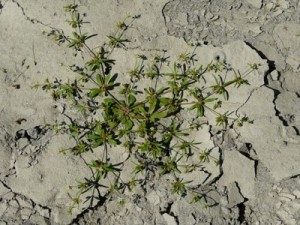
Carpetweed grows in a variety of conditions.
One of the more common edible weeds underfoot in North America is Carpetweed, Mollugo verticillata. Scraggly if not scrawny the wispy plant does have the saving grace that it is all edible, raw or cooked and it requires very little cooking. Add it last. There are several non-edible species that can resemble it so there are some of key points to remember. First, it does not have any white sap, it grows in a circular mat, and the blossoms have five white sepals but usually only three stamens, sometimes four or five but usually three, which is a bit odd for a five-sepal plant. Look for it in dry, sandy locations including waste ground. For all of its wide-spread presence in North America it is actually native to the tropical Americas. You can read about Carpetweed here.
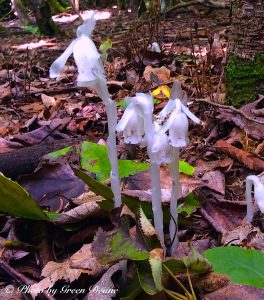
For small plants Indian Pipes get noticed a lot.
Several plants were called “Indian Pipes” where and when I was growing up. One of them is the Monotropa uniflora. Living more like a mushroom than a plant it sprouts up in various edibility conversations. It helps focus the issue on exactly what “edibility” means. Other than allergies, edibility does imply it will not kill you or harm you in any significant way. But “edibility” does not have to imply tasty. As forager Dick Deuerling used to say “there are a lot of edible plants. I only eat the good stuff.” There are also things that are just too woody or bitter to eat more than a sample of but are included in “edible.” And some plants have to be prepared correctly to be “edible.” Is the Monotropa uniflora edible? Yes. Does it taste good? Only if you’re really hungry. But that is understandable. The list of edible plants has to include everything from incredibly delicious food to only-if-I-were-starving food. Indian Pipes are closer to the famine food end of that list. You can read more about the Monotropa here.
This is weekly issue 321.
If you would like to donate to Eat The Weeds please click here. Or you can use my Go Fund Me link, or by writing to Green Deane POB 941793 Maitland FL, 32794

